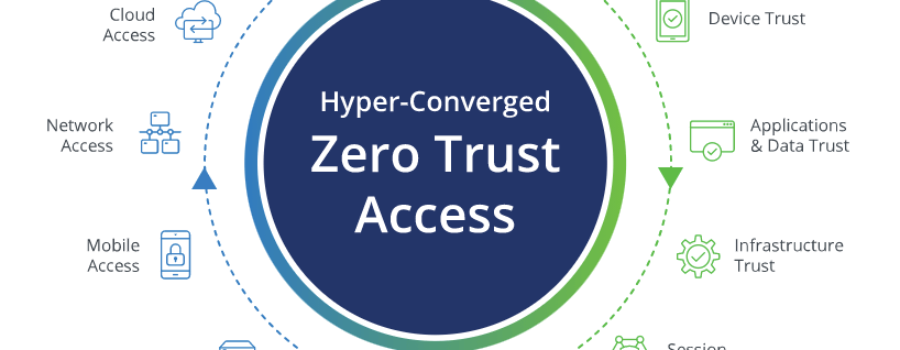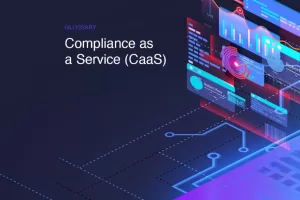Table of Contents
Introduction
Out with the traditional concept of cybersecurity, and in with “zero trust security”. In light of the ever-changing complexity of cyber-threats, as well as the new paradigms of cloud computing and BYOD, organizations have had to undergo a radical change in their approach to safeguarding their digital assets. In response to these challenges the concept of Zero Trust has emerged as an innovative approach that has redefined cybersecurity in recent years. This article takes a journey through the Zero Trust core principles, exploring its many implementation strategies and addressing potential challenges organizations may encounter when attempting to adopt this security model.
Understanding Zero Trust Security
The traditional security perimeter is increasingly permeable in an age where cyber threats are not limited by geographical boundaries, but often come from both inside and outside sources. Zero trust security is a radical departure from the conventional wisdom. It departs from the traditional mentality of “trust but verify” and instead embodies the principle “never trust, always verify.” This paradigm shift replaces the implicit trust that assets in a network are granted with a dynamic authorization and authentication model. Zero Trust is based on continuous verification of user identities, devices and access, regardless of their location in the network. This model allows for known-good devices to still be checked, so in the event of compromise, there’s no implicit allow.
Crowdstrike, the market leader for Endpoint Detection Response (EDR) software, defines zero-trust as this: “a security framework requiring all users, whether in or outside the organization’s network, to be authenticated, authorized, and continuously validated for security configuration and posture before being granted or keeping access to applications and data. Zero Trust assumes that there is no traditional network edge; networks can be local, in the cloud, or a combination or hybrid with resources anywhere as well as workers in any location.”
Picture this: You’re invited to a black tie event for work to celebrate winning a massive client. It’s hosted at a historical mansion (we are pretending after all). You step through the mansion’s ornate doors and hand the bouncer your invite. You’re let in, but instead of being granted unrestricted access, you’re met with gatekeepers at every room. Each door you approach requires you to provide not just your name, but also details about your background, your intentions, and your affiliations. Even though you’ve mingled with these hosts just minutes before, you understand that trust isn’t granted based on familiarity alone. The mansion employs a zero trust approach, ensuring that your presence is validated at every step and your doppelgänger hasn’t swapped places with you.

Implementation Strategies
Implementing Zero Trust goes beyond traditional cybersecurity practices. It requires a strategic and holistic approach that includes network architecture, data protection, and identity management. The Zero Trust framework can help organizations navigate the complex path to safeguarding their digital eco-system with strategies like:
- Micro Segmentation: The division of networks in isolated segments provides a higher level of security by limiting the movement of threats. Each segment is an independent enclave that only allows access to users and devices who are authorized.
- Identity and Access Management: IAM practices are based on rigorous identity verification. The trifecta of multi-factor authentication, the principle of least privilege and continuous authentication ensures that users and devices can be authenticated and authorized before accessing valuable resources.
- Data encryption: Protecting data in transit and at rest is paramount to Zero Trust. Encryption ensures that sensitive information is unreadable even if an unauthorized person gains access.
- Continuous monitoring: A continuous monitoring system of network traffic, device activity, and user behavior in real time serves as a detection system to detect potential security breaches.
- Policy Implementation: Enforcing strict security policies on the network creates a strong line of defense that allows only authorized actions, reducing the attack surface.
Challenges to Implementation
The journey to Zero Trust security, like any transformational endeavor, is not without challenges.
- Legacy Infrastructure The transition from legacy systems to Zero Trust Architecture can be complex and time-consuming. Planning migration strategies carefully and assessing compatibility issues is essential.
- User experience: Achieving the delicate balance between enhanced user security and a seamless experience is an essential challenge. Inadvertently imposing overly strict access controls can cause frustration and hinder productivity.
- Cultural Change: Adopting Zero Trust requires a shift in culture towards skepticism and continuous verification. This could clash with established practices or ingrained attitudes in an organization.
- Complexity Zero Trust’s multidimensional nature can increase the complexity of managing security policies, monitoring systems, and access control.
- Resource Intensity Implementing and maintaining Zero Trust requires a significant allocation of resources. This includes time, qualified personnel and investments in cutting edge security tools.
See below image for additional challenges some organizations voice concern about.

Mitigating The Challenges of Implementing Zero Trust
As organizations venture into adopting Zero Trust security, they encounter challenges that require careful handling. Yet, these hurdles need not be daunting. By using smart strategies, these issues can be tackled effectively, paving the way for a successful implementation. This section explores important techniques that help organizations navigate the complexities of Zero Trust adoption with ease and confidence.
- Comprehensive assessment: This journey begins with a comprehensive assessment of the network infrastructure. It identifies legacy systems, potential vulnerabilities and the critical assets which require enhanced protection.
- Phased Method: A phased method is preferred to a radical change. It is more pragmatic to start with key segments or departments and then expand the model.
- User Education and Training: It is impossible to overstate the importance of user awareness and buy-in. Employees are better educated about Zero Trust and its importance, as well as the impact it has on their everyday workflows, when they’re informed.
- User Centric Approach: Designing security policies must prioritize seamless user experiences. Context-aware authentication mechanisms, which facilitate adaptive security, strike a balance between providing smoother access for authorized users while intensifying scrutiny of potential threats.
- Analytics and Automation: Strategic use of analytics and automation tools can improve policy enforcement and anomaly identification. Advanced analytics can reveal insights into the behavior of users, allowing for faster identification of threats.
- Collaboration & Training: Working with experts in security, vendors and partners who are experienced in Zero Trust implementation is invaluable. By providing your IT staff with comprehensive training on Zero Trust principles and practices, they will be able to navigate any challenges.
- Change management: Incorporate the cultural shift mandated under Zero Trust in your organization’s strategy for change management. Share the benefits of increased security and the necessity of continuous verification. Align the security vision to your company’s core value.
- Continuous evaluation: It is crucial to regularly evaluate the effectiveness of your Zero Trust implementation. Assess the impact of your Zero Trust implementation on security, user-experience, and operational efficiency. Modify or adapt strategies as necessary
These mitigation strategies can help organizations navigate the challenges associated with Zero Trust implementation. The journey is challenging, but the rewards are worth it in terms of a strengthened security posture, reduced vulnerability, and enhanced data privacy. In an era where businesses are increasingly recognizing the importance of cybersecurity, adopting Zero Trust is a key strategy for protecting digital assets.
If you need assistance in your journey, check out our compliance offerings, and we’d be happy to help!





